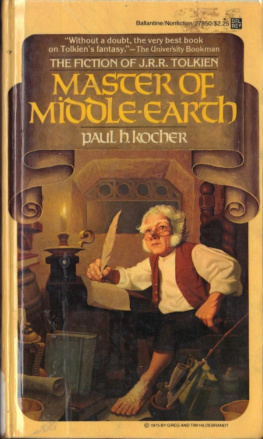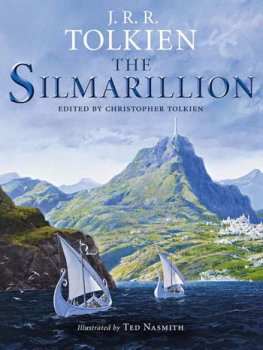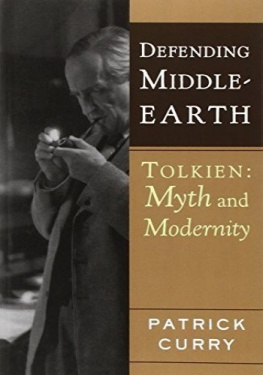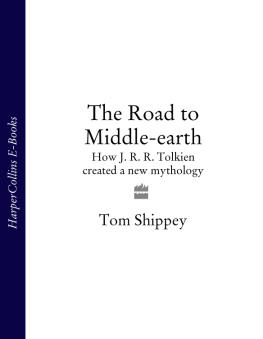Master of Middle-Earth
TheFiction of J. R. R. Tolkien
Paul H. Kocher
Chapter 1 : Middle-earth: An Imaginary World?
In 1938 when Tolkien was starting towrite The Lord of the Rings he also delivered a lecture at theUniversity of St. Andrews in which he offered his views on the types of worldthat it is the office of fantasy, including his own epic, to"sub-create," as he calls it. Unlike our primary world of daily fact,fantasy's "secondary worlds" of the imagination must possess, hesaid, not only "internal consistency" but also "strangeness andwonder" arising from their "freedom from the domination of observedfact."1 If this were all, the secondary world of faery wouldoften be connected only very tenuously with the primary world. But Tolkienknew, none better, that no audience can long feel sympathy or interest forpersons or things in which they cannot recognize a good deal of themselves andthe world of their everyday experience. He therefore added that a secondaryworld must be "credible, commanding Secondary Belief." And hemanifestly expected that secondary worlds would combine the ordinary with theextraordinary, the fictitious with the actual: "Faerie containsmany things besides elves and fays, and besides dwarfs, witches, trolls, giantsor dragons: it holds the seas, the sun, the moon, the sky; and the earth andall things that are in it: tree and bird, water and stone, wine and bread, andourselves, mortal men, when we are enchanted."
Tolkien followedhis own prescription in composing The Lord of the Rings, or perhaps heformulated the prescription to justify what he was already intending to write.In either case the answer to the question posed by the title of this chapter is"Yes, but." Yes, Middle-earth is a place of many marvels. But they areall carefully fitted into a framework of climate and geography, familiar skiesby night, familiar shrubs and trees, beasts and birds on earth by day, men andmanlike creatures with societies not too different from our own. Consequentlythe reader walks through any Middle-earth landscape with a security ofrecognition that woos him on to believe in everything that happens. Familiarbut not too familiar, strange but not too strange. This is the master rubricthat Tolkien bears always in mind when inventing the world of his epic. Inapplying the formula in just the right proportions in the right situationsconsists much of his preeminence as a writer of fantasy.
Fundamental toTolkien's method in The Lord of the Rings is a standard literary posewhich he assumes in the Prologue and never thereafter relinquishes even in theAppendices: that he did not himself invent the subject matter of the epic butis only a modern scholar who is compiling, editing, and eventually translatingcopies of very ancient records of Middle-earth which have come into his hands,he does not say how. To make this claim sound plausible he constructs anelaborate family tree for these records, tracing some back to personalnarratives by the four hobbit heroes of the War of the Ring, others tomanuscripts found in libraries at Rivendell and Minas Tirith, still others tooral tradition.2 Then, in order to help give an air of credibilityto his account of the War, Tolkien endorses it as true and calls it history,that is, an authentic narrative of events as they actually happened in theThird Age. This accolade of history and historical records he bestowsfrequently in both Prologue and Appendices. With the Shire Calendar in the year1601 of the Third Age, states the Prologue,"... legend among theHob-bits first becomes history with a reckoning of years." A few pagesfarther on, Bilbo's 111th birthday is said to have occurred in Shire year 1041:"At this point this History begins." And in Appendix F Tolkiendeclares editorially, "The language represented in this history by Englishwas the Westron or 'Common Speech' of the West-lands of Middle-earth inthe Third Age."3
Many writers offantasy would have stopped at this point. But Tolkien has a constitutionalaversion to leaving Middle-earth afloat too insubstantially in empty time andplace, or perhaps his literary instincts warn him that it needs a localhabitation and a name. Consequently he takes the further crucial step ofidentifying it as our own green and solid Earth at some quite remote epoch inthe past. He is able to accomplish this end most handily in the Prologue andAppendices, where he can sometimes step out of the role of mere editor andtranslator into the broader character of commentator on the peoples and eventsin the manuscripts he is handling. And he does it usually by comparingconditions in the Third Age with what they have since become in our present.
About the hobbits,for instance, the Prologue informs the reader that they are "relations ofours," closer than elves or dwarves, though the exact nature of this bloodkinship is lost in the mists of time. We and they have somehow become"estranged" since the Third Age, and they have dwindled in physicalsize since then. Most striking, however, is the news that "those days, theThird Age of Middle-earth, are now long past, and the shape of all lands hasbeen changed; but the regions in which Hobbits then lived were doubtless thesame as those in which they still linger: the Northwest of the Old World, eastof the Sea."
There is much todigest here. The Middle-earth on which the hobbits lived is our Earth as it waslong ago. Moreover, they are still here, and though they hide from us in theirsilent way, some of us have sometimes seen them and passed them on under othernames into our folklore. Furthermore, the hobbits still live in the region theycall the Shire, which turns out to be "the North-West of the Old World,east of the Sea." This description can only mean northwestern Europe,however much changed in topography by eons of wind and wave.
Of course, themaps of Europe in the Third Age drawn by Tolkien to illustrate his epic show acontinent very different from that of today in its coastline, mountains,rivers, and other major geographical features. In explanation he points to theforces of erosion, which wear down mountains, and to advances and recessions ofthe sea that have inundated some lands and uncovered others. Singing of hisancestor Durin, Gimli voices dwarf tradition of a time when the earth was newlyformed and fair, "the mountains tall" as yet unweathered, and theface of the moon as yet unstained by marks now visible on it. Gandalf objectsto casting the One Ring into the ocean because "there are many things inthe deep waters; and seas and lands may change." Treebeard can rememberhis youth when he wandered over the countries of Tasarinan, Ossiriand,Neldoreth, and Dorthonion, "And now all those lands he under thewave." At their parting Galadriel guesses at some far distant future when"the lands that he under the wave are lifted up again" and she andTreebeard may meet once more on the meadows of Tasarinan. Bombadil recalls adistant past, "before the seas were bent." By many such referencesTolkien achieves for Middle-earth long perspectives backward and forward ingeological time.
One episode inparticular, the reign of Morgoth from his stronghold of Thangorodrim somewherenorth of the Shire for the three thousand years of the First Age, producesgreat changes in Middle-earth geography. To bring about his over-throw theGuardian Valar release titanic natural forces, which cause the ocean to drownnot only his fortress but a vast area around it, including the elf kingdoms ofBeleriand, Nargothrond, Gondolin, Nogrod, and Belagost. Of that stretch of thenorthwestern coast only Lindon remains above the waves to appear on Tolkien'sThird Age maps. The flooding of rebellious Nmenor by the One at the end of theSecond Age is a catastrophe of equal magnitude.
But Tolkien givesthe realm of Morgoth an extra level of allusiveness by describing it as sobitterly cold that after its destruction "those colds linger still in thatregion, though they lie hardly more than a hundred leagues north of theShire." He goes on to describe the Forod-waith people living there as"Men of far-off days," who have snow houses, like igloos, and sledsand skis much like those of Eskimos. Add the fact that the Witch-king of Angmar(thereafter called simply Angmar), Morgoth's henchman, has powers that wane insummer and wax in winter and it becomes hard not to associate Morgoth in someway with a glacial epoch, as various commentators have already done. In hisessay "On Fairy-stories" Tolkien refuses to interpret the Norse godThorr as a mere personification of thunder.4 Along the same lines,it is not his intention, I think, to portray Morgoth as a personification of anIce Age. However, it would seem compatible with his meaning to consider Morgotha spirit of evil whose powers have engendered the frozen destructiveness ofsuch an age.
Next page










